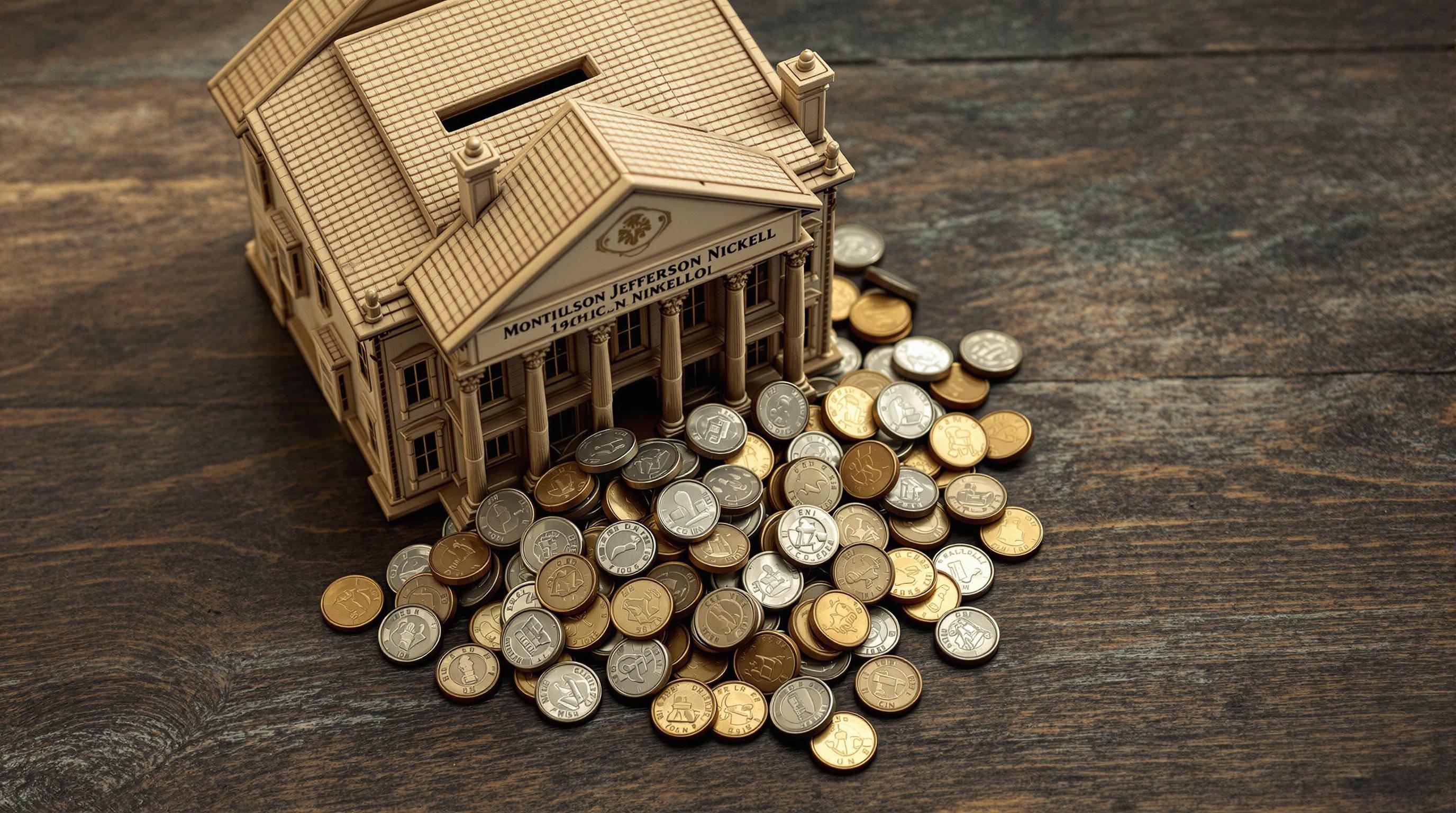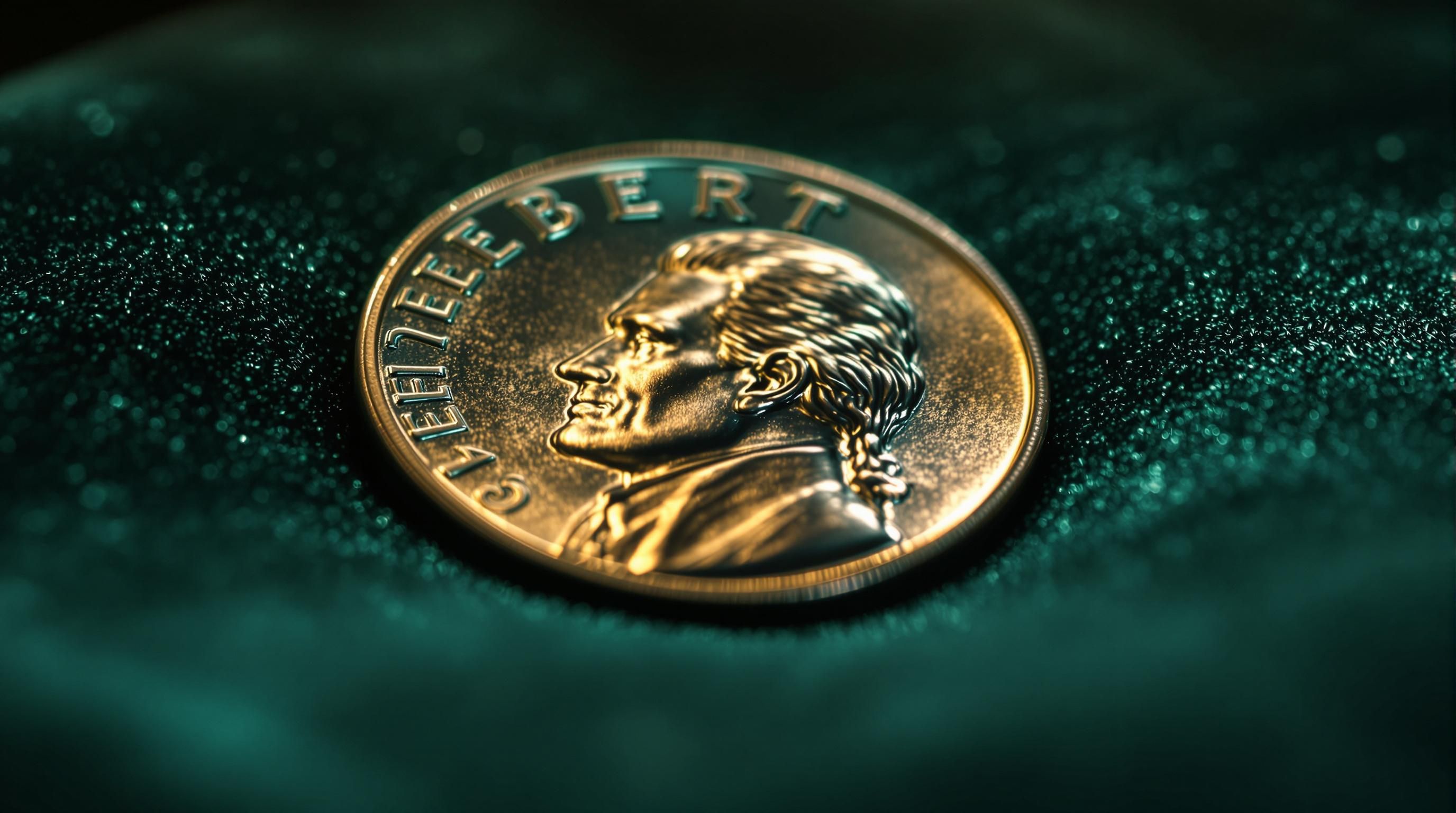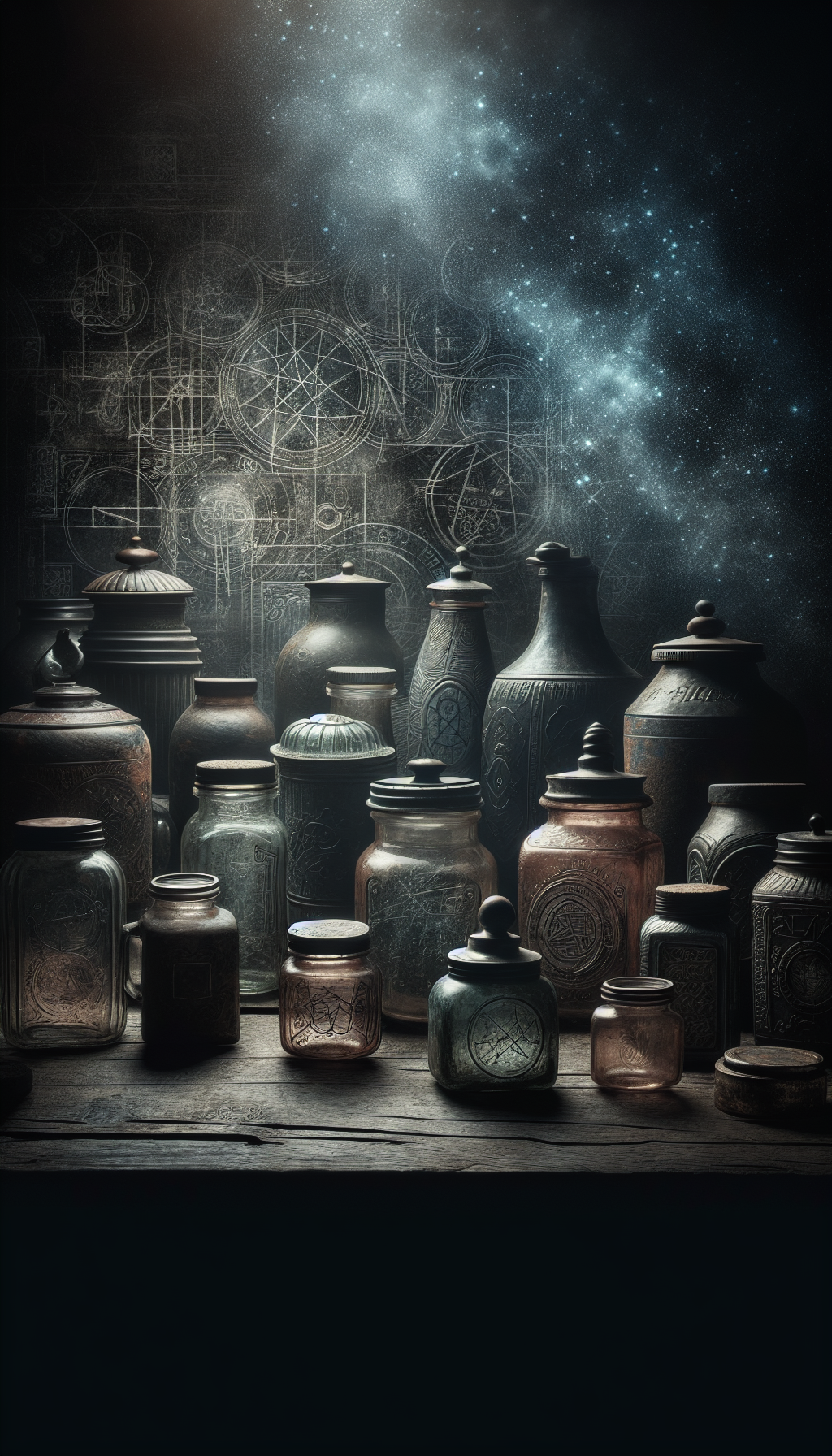1964 Nickel Value Overview
1964 Nickel Valuation at a Glance
</tbody>
</table>
Understanding the 1964 Jefferson Nickel
The 1964 Jefferson nickel was produced during a significant transitional period in American coinage. This was the last year before the introduction of clad coinage and the beginning of the end for silver in U.S. circulating coins. While nickels themselves were not made of silver (except for the 1942-1945 war nickels), this historical context makes 1964 an interesting year for coin collectors.
Historical Context of the 1964 Nickel
- 1938
Jefferson Nickel Introduction
Felix Schlag's design featuring Thomas Jefferson on the obverse and his home, Monticello, on the reverse replaced the Buffalo nickel. - 1942-1945
Silver War Nickels
During WWII, nickels contained 35% silver to conserve nickel for the war effort, marked with large mint marks above Monticello. - 1964
High Mintage Year
Over 1 billion nickels were produced (both Philadelphia and Denver combined), one of the highest mintage years for Jefferson nickels. - 1965
Coinage Act of 1965
Following 1964, the silver content was removed from dimes and quarters, making 1964 the last year of 90% silver dimes and quarters.
Key Features of the 1964 Jefferson Nickel
- Obverse (Front): Features a left-facing profile of Thomas Jefferson designed by Felix Schlag
- Reverse (Back): Depicts Jefferson’s home, Monticello, with the steps of the building being a key area for grading
- Composition: 75% copper, 25% nickel (not silver, despite common misconceptions)
- Weight: 5.00 grams
- Diameter: 21.2 mm
- Edge: Plain (not reeded)
- Designer: Felix Schlag
- Mintage: 1,028,622,762 (Philadelphia) and 1,787,297,160 (Denver)
1964 Nickel Varieties and Mint Marks
1964 Philadelphia Nickel (No Mint Mark)
Nickels minted at the Philadelphia facility don’t feature a mint mark. With over 1 billion produced, these are very common coins:
- Mintage: 1,028,622,762
- Identification: No mint mark on the reverse
- Value Range: $0.05 (face value) for circulated examples to $15 for MS65 specimens, with exceptional MS67 examples worth around $500
1964-D Denver Nickel
Nickels from the Denver mint facility feature a small “D” mint mark:
- Mintage: 1,787,297,160
- Identification: “D” mint mark on the reverse, located to the right of Monticello
- Value Range: $0.05-$0.20 for circulated examples, $15 for MS65 specimens, and up to $600 for MS67 examples
Where to Find the Mint Mark on a 1964 Nickel
On 1964 Jefferson nickels, the mint mark (if present) is located on the reverse side:
- Look at the reverse (back) of the coin showing Monticello
- The mint mark is positioned to the right of the building
- A “D” indicates Denver Mint, while no mint mark means it was struck at Philadelphia
Note: Do not confuse the mint mark with the designer’s initials “FS” (Felix Schlag), which appear at the base of Jefferson’s bust on the obverse.
Grading and Valuing Your 1964 Nickel

The Sheldon Coin Grading Scale
Coins are graded on a scale from 1 to 70, with 70 being a perfect specimen:
- 1-10 (Poor to Good): Heavy wear, major details missing
- 12-35 (Fine to Very Fine): Moderate to light wear, major details visible
- 40-58 (Extremely Fine to About Uncirculated): Light wear, most details sharp
- 60-70 (Mint State): No wear from circulation, categorized by the number and severity of contact marks and eye appeal
1964 Nickel Condition Assessment
Check these characteristics to help determine your coin's grade
- No visible wear on Jefferson's hair or cheek
- Full luster across the entire coin surface
- No significant contact marks or scratches
- Clear steps visible on Monticello (for Full Steps designation)
- Sharp, well-defined rim without wear
- No discoloration, spotting, or toning
The Importance of “Full Steps”
A key factor that can significantly increase the value of a 1964 Jefferson nickel is the “Full Steps” designation:
- Full Steps (FS): Refers to the clarity of the steps leading to the entrance of Monticello on the reverse
- 5FS: Five complete steps are visible
- 6FS: All six steps are fully visible with clear separation
- Value Impact: A 1964 nickel with Full Steps can be worth 10-20 times more than the same grade without this feature
1964 Nickel Value by Grade and Variety
Current market values as of April 2025
| Category | Price | Notes |
|---|---|---|
| Circulated Condition | $0.05-$0.20 | Face value to slight premium |
| Uncirculated (MS65) | $10-$15 | Basic mint state examples |
| Superb (MS67) | $500-$600 | Premium mint state examples |
| Full Steps (MS65FS) | $700+ | With clear step details |
| Special Strike SMS | $200-$15,000 | Rare special mint finish |
| Error Varieties | $50-$32,000 | Depending on error type |
</tbody>
</table>
Rare and Valuable 1964 Nickel Varieties

1964 Special Mint Set (SMS) Nickels
One of the rarest and most valuable 1964 nickel varieties is the Special Mint Strike (SMS):
- Background: These were specially struck coins with a distinctive satin finish
- Characteristics: Extremely sharp strike, square edge rims, and satin-like surfaces
- Rarity: Very rare, with exact numbers unknown
- Value: $200 for basic examples up to $15,000 for perfect specimens
- Authentication: Always requires professional certification by PCGS, NGC, or another trusted grading service
Other Rare 1964 Nickel Varieties
Several error types can make a 1964 nickel more valuable:
- Double Die Errors: Shows doubling of design elements
- Off-Center Strikes: Part of the design is missing due to misalignment
- Wrong Planchet Errors: Struck on a planchet intended for another denomination
- RPM (Re-Punched Mint Mark): Multiple impressions of the mint mark
The $32,000 1964 Nickel Mystery
Based on auction records and expert opinions, this value likely refers to a combination of factors that could make a 1964 nickel extremely valuable:
- A perfect grade (MS67+ or MS68)
- Full Steps designation (6FS)
- Special strike characteristics
- Possibly a rare error variety
It’s important to note that such high-value sales are extremely rare, and most 1964 nickels, even uncirculated ones, won’t approach anywhere near this value. Always verify such claims with reputable sources like NGC, PCGS, or major auction houses.
Common Misconceptions About 1964 Nickels
Myth 1: 1964 Nickels Contain Silver
Despite common belief, regular 1964 Jefferson nickels do NOT contain silver. They are composed of 75% copper and 25% nickel, the same composition used for nickels since 1946 (except for the 1942-1945 war nickels which did contain 35% silver).
Myth 2: All 1964 Nickels Are Valuable
Due to their high mintage (nearly 3 billion combined from both mints), most 1964 nickels are only worth their face value of 5 cents unless they are in pristine uncirculated condition or have special characteristics like Full Steps or rare errors.
Myth 3: “S” Mint Mark 1964 Nickels Exist
Some collectors believe they’ve found 1964 nickels with an “S” mint mark. However, the San Francisco mint did not produce circulation nickels in 1964. Any apparent “S” mark is likely damage, a misread “D” mint mark, or in some cases, a counterfeit.
How to Sell Your Valuable 1964 Nickel
Step 1: Get Professional Authentication
For any potentially valuable coin (especially those that might be worth over $100):
- Have your coin graded by a reputable third-party grading service like PCGS or NGC
- This provides authentication and an objective grade
- Slabbed (encapsulated) coins typically sell for more than raw (ungraded) coins
Step 2: Research Current Market Values
Before selling:
- Check recent auction results for similar coins
- Consult price guides from NGC, PCGS, or other reputable sources
- Join coin collecting forums to understand the current market
Step 3: Choose the Right Selling Method
Depending on the value of your coin:
- For coins worth $5-$100: Online marketplaces like eBay, coin dealer websites, or coin shows
- For coins worth $100-$1,000+: Specialized coin auctions, established dealers, or auction houses
- For very rare specimens: Major numismatic auctions like Heritage Auctions or Stack’s Bowers
External Resources for 1964 Nickel Valuation
Explore these trusted sources for more information about Jefferson nickels and coin values
NGC Coin Explorer: 1964 Jefferson Nickel
NGC's comprehensive guide to the 1964 Jefferson Nickel with price guide, grading information, and auction records.
NGC: Face Value 1964 Jefferson Nickel
An in-depth article about the 1964 Jefferson nickel's value, history, and collecting significance.
PCGS CoinFacts: 1964 5C Special Strike (SMS)
Detailed information about the rare Special Strike 1964 nickels with auction prices and grading guidance.
PCGS Auction Prices: 1964 Nickel
Recent auction results for 1964 nickels of various grades, helping you understand current market values.
CoinStudy: 1964 Nickel Value
A collector-focused guide to understanding 1964 nickel values with helpful images and grading information.
Coin Value Checker: 1964 Nickel Guide
Comprehensive guide covering 1964 nickel values, errors, and collecting tips.
Tips for Collecting 1964 Jefferson Nickels
Focus on Quality Over Quantity
Since 1964 nickels are common, concentrate on finding high-quality examples rather than accumulating large quantities of average specimens:
- Look for coins with minimal contact marks
- Seek examples with full luster
- Target coins with sharp strikes, especially those showing clear Monticello steps
Consider Starting a Full Set
A complete 1964 Jefferson nickel collection might include:
- Philadelphia (no mint mark) examples in various grades
- Denver (D mint mark) examples in various grades
- Special varieties and errors
- Proof versions from San Francisco (if expanding to include related coins)
Proper Storage and Handling
To preserve the value of your 1964 nickels:
- Use acid-free coin holders, flips, or albums
- Handle coins by their edges, never touching the faces
- Store in a cool, dry environment
- Consider professional encapsulation for valuable specimens
Frequently Asked Questions About 1964 Nickels
How much is a 1964 nickel worth today?
A typical circulated 1964 nickel is worth its face value of 5 cents. Uncirculated examples graded MS65 are worth around $10-$15. Higher-grade specimens (MS67) can be worth $500-$600. Coins with the Full Steps designation can be worth considerably more, with MS65FS examples valued around $700 and MS66FS specimens potentially reaching $4,250. Special Strike (SMS) 1964 nickels can be worth anywhere from $200 to $15,000 depending on their condition and characteristics.
Is a 1964 nickel made of silver?
No, 1964 Jefferson nickels are not made of silver. They are composed of 75% copper and 25% nickel, the standard composition for nickels since 1946. The only silver nickels are the "War Nickels" minted from mid-1942 to 1945, which contain 35% silver and are identified by a large mint mark above Monticello on the reverse.
Where is the mint mark on a 1964 nickel?
On a 1964 Jefferson nickel, the mint mark (if present) is located on the reverse side of the coin, to the right of Monticello. A "D" mint mark indicates the coin was minted in Denver, while no mint mark means it was produced at the Philadelphia Mint.
What makes the 1964 nickel so rare?
Most 1964 nickels are not rare at all—in fact, they're quite common with nearly 3 billion produced. What makes certain 1964 nickels valuable are specific characteristics: perfect or near-perfect condition (MS67+), Full Steps designation (5FS or 6FS), Special Mint Strike (SMS) specimens, and coins with significant errors. The rarest 1964 nickels are the SMS varieties, which have a distinctive satin finish and exceptionally sharp strike.
How can you tell if a 1964 nickel is a special strike?
Special Strike 1964 Jefferson nickels have several distinctive characteristics: - An extremely sharp strike with well-defined details - Sharp and square edge rims rather than rounded - A satin-like finish to the surfaces - Superior overall quality compared to regular business strikes
Due to their value and the difficulty in authentic identification, any suspected SMS 1964 nickel should be submitted to a professional grading service like PCGS or NGC for authentication.
What are Full Steps on a 1964 nickel?
"Full Steps" refers to the complete visibility of the steps leading to the entrance of Monticello on the reverse of the Jefferson nickel. For a 1964 nickel to receive the Full Steps (FS) designation:
- 5FS: Five complete steps must be visible with clear separation
- 6FS: All six steps must be fully visible with clear separation
This feature significantly increases the value of a Jefferson nickel because most were not struck well enough to show complete step detail, making Full Steps specimens much rarer.
Is the $32,000 1964 nickel real?
Reports of a 1964 nickel selling for $32,000 likely refer to an extremely rare combination of factors: perfect grade (MS67+/MS68), Full Steps designation (6FS), possibly with the SMS characteristics or a significant error. While such a sale is theoretically possible for an exceptionally rare specimen, most collectors will never encounter such a coin. Always verify such claims through reputable sources like major auction houses or certified coin grading services before making any purchase decisions based on these reports.
What are the most valuable 1964 nickel errors?
The most valuable 1964 nickel errors include:
- Double Die errors - where design elements show doubling
- Off-center strikes - where part of the design is missing due to misalignment
- Wrong planchet errors - struck on a planchet intended for another denomination
- RPM (re-punched mint mark) - showing multiple impressions of the mint mark
- Major die cracks or cuds - significant breaks in the die
The value of these errors can range from $50 to several thousand dollars depending on the severity and rarity of the error.
Conclusion: Is Your 1964 Nickel Worth a Fortune?
If you believe you have a valuable 1964 nickel, consider having it professionally graded by a reputable service like PCGS or NGC. This will not only authenticate your coin but also give you an objective assessment of its condition and potential value.
Remember that coin collecting is as much about the enjoyment of history and numismatics as it is about monetary value. Whether your 1964 nickel is worth 5 cents or $500, it represents an interesting piece of American coinage history worth preserving for future generations.
For most people, the 1964 nickel in their pocket change will simply be worth 5 cents—but for the lucky few who find a superb uncirculated specimen, a Full Steps example, or a rare error, that humble nickel could be worth significantly more.
Get a Professional Appraisal
Unsure about your item’s value? Our certified experts provide fast, written appraisals you can trust.
- Expert report with photos and comps
- Fast turnaround
- Fixed, upfront pricing
No obligation. Secure upload.
| Category | Price | Notes |
|---|---|---|
| 1964 (No Mint Mark) | $0.05-$0.10 | Circulated |
| 1964-D | $0.05-$0.10 | Circulated |
| 1964 MS65 | $10-$15 | Uncirculated |
| 1964-D MS65 | $10-$15 | Uncirculated |
| 1964 MS67 | $500 | Superb Uncirculated |
| 1964-D MS67 | $600 | Superb Uncirculated |
| 1964 MS65FS | $700 | Uncirculated with Full Steps |
| 1964-D MS65FS | $700 | Uncirculated with Full Steps |
| 1964 MS66FS | $4,250 | Gem Uncirculated with Full Steps |
| 1964 SMS | $200-$15,000 | Special Mint Strike |




